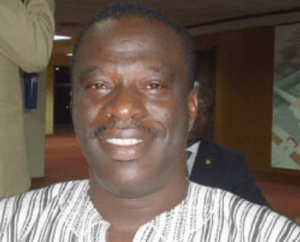Ghana unemployment rate stood at 8.4% in 2019 – Minister

Mr Ignatius Baffour Awuah, Minister for Employment and Labour Relations has informed Parliament that the Ghana Living Standards Survey Round Seven (GLSS7) has estimated the national unemployment rate to be 8.4 per cent in 2019.
He added that based on the GLSS7 of the Ghana Statistical Service (GSS), about 1,027,594 persons aged 15 years and older were estimated to be unemployed as of 2019.
He said statistics on unemployment in Ghana were not published regularly by the Labour Department and the GSS, however, they were published periodically based on surveys and population censuses, such as recently concluded by GSS.
Mr Baffour Awuah announced the figures when he appeared before Parliament, in Accra, to respond to a question by Mr Thomas Nyarko Ampem, Member of Parliament for Asuogyaman on the current rate of unemployment in Ghana and how many direct jobs the government had created from 2017 to date.
Mr Baffour Awuah said the 2021 population census put the labour force, which was the economically active population of 15 years and older, at 11,541, 355 adding that out of the figure, 9,990,237 were employed and 1,551,118 unemployed.
“This puts the unemployment rate at 13.44 per cent,” Mr Baffour Awuah said.
“Mr Speaker, the above figures are at variance with the figures obtained from the ILOSTAT on Ghana for the same period. According to the ILOSTAT report, the unemployment figure of Ghana for 2019 was 4.12 per cent and 4.53 per cent for 2020,” he said.
Admitting to unemployment issues as a major policy concern that had dominated national discourse since time immemorial, the sector minister said it was important stakeholders recognised and acknowledged the dynamics of Ghana’s labour market system as well as the data and reporting challenges of national institutions such as the Labour Department and the GSS.
To that end, he said, the Ministry of Employment and Labour Relations was conducting an analysis of jobs created by the government as of December 2021.
He noted that it was expected that the exercise would be completed by the end of the first quarter of 2022 and the House would be furnished with the final report upon completion of the exercise.
“Mr Speaker, in 2021, the Ministry of Employment and Labour Relations undertook a trend analysis of the unemployment situation in the country over the past 29 years (1991-2020). Data for the analysis was sourced from the International Labour Organisation’s ILOSTAT, a global reference for international labour statistics. ILOSTAT cross-references data from the labour surveys, census, and other national data from Ghana Statistical Service for its analysis,” he said.
Mr Baffour Awuah said the variations of the GSS figures and that of the ILO stemmed from a different definition that was used in their computations.
“Mr Speaker, ILO’s standard definition of unemployed persons is all those you have attained employable age and are available for jobs and looking for jobs but not getting ie this excludes all those who have reached the employable age, not working, yet are not looking for jobs within the reference period.
“GSS, however, uses ILO relaxed definition of unemployment which includes all persons that have reached the employable age and are available for jobs, whether looking for jobs or not. For instance, in analysing the metadata from 2019 from the GSS, GLSS, per ILO’s definition, the unemployment rate stood at 4.12 per cent. But using the relaxed definition an additional 4.3 per cent was added to bring the ratio to 8.4 per cent,” Mr Baffour Awuah told Parliament.
Source: GNA
